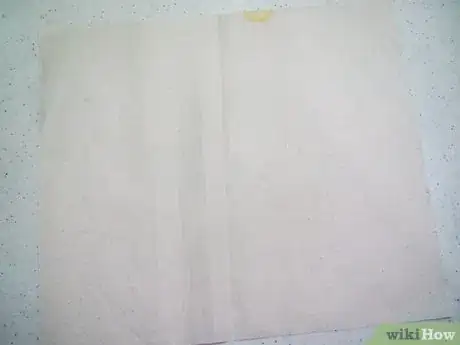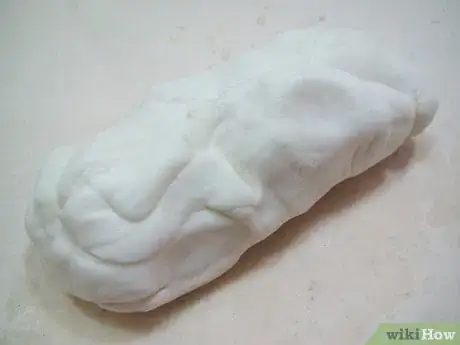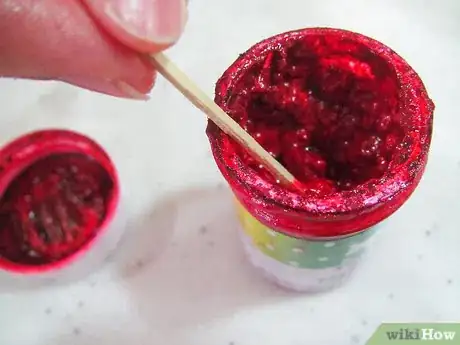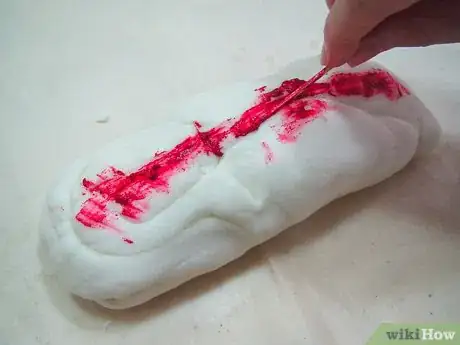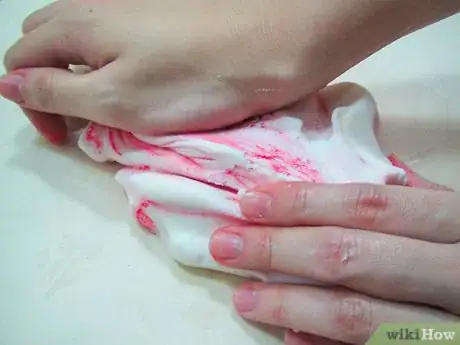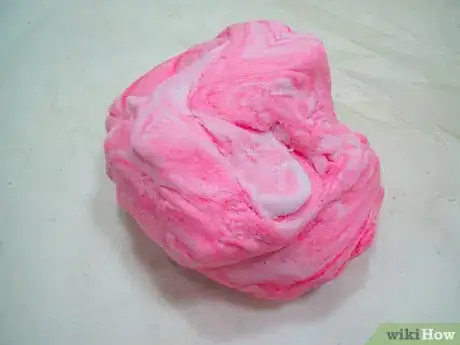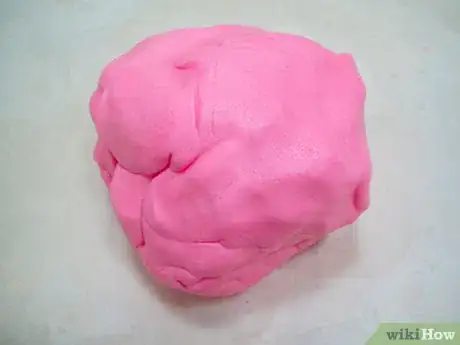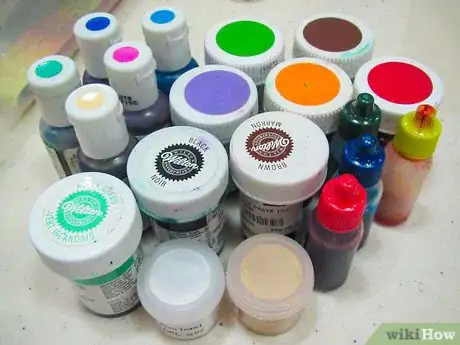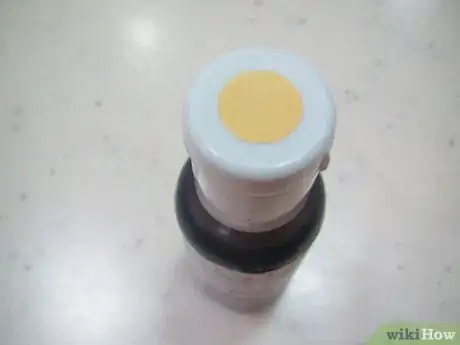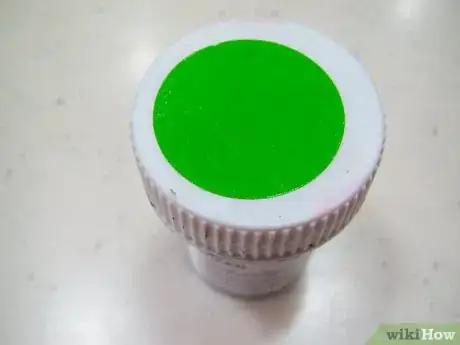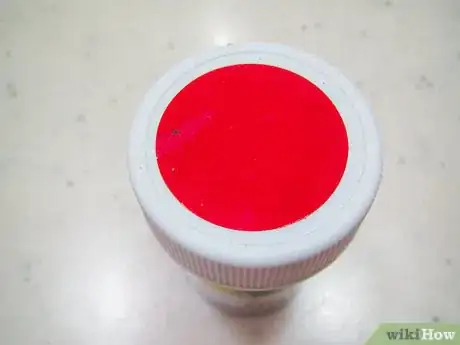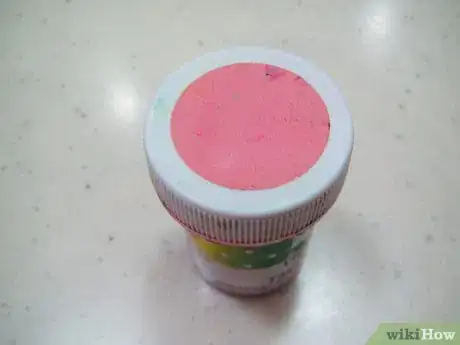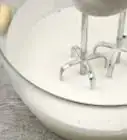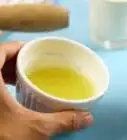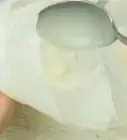wikiHow is a “wiki,” similar to Wikipedia, which means that many of our articles are co-written by multiple authors. To create this article, 10 people, some anonymous, worked to edit and improve it over time.
wikiHow marks an article as reader-approved once it receives enough positive feedback. In this case, 87% of readers who voted found the article helpful, earning it our reader-approved status.
This article has been viewed 197,730 times.
Learn more...
Plain fondant can be colored to any color you need using the technique shown here. You can also color the fondant or create a marble effect. As well as learning how to add color, you'll also learn a little about using different types of color sources.You can also skip coloring your own fondant and buy precolored fondant if you so wish.
Steps
Preparing the Fondant
Adding the coloring
-
1Dab just a little of the frosting color onto the tool you're using. Use something small and pointed, such as a clean artists brush or a toothpick.
-
2Stroke the color across the fondant surface. Draw it across the surface as far as it will go.
- Avoid digging into the fondant. This can introduce unwanted pockets of air, which can leave bubbles in the fondant.
-
3
-
4For an even, complete colored effect, knead or roll until the coloring has spread throughout the whole fondant.
Choosing Fondant Coloring
-
1Choose a coloring type. There is a wide variety of possible colorings for use with fondant, including:
- Paste colors - only use a tiny quantity as this is very concentrated
- Gel colors - this is a strong color and it's easy to use
- Powder colors - this needs to be dissolved in liquid before use to avoid undissolved pieces showing in the fondant
- Liquid colors - use cake decorating versions to ensure nice consistency
- Lustres - for adding a sheen.
-
2Be aware of a few issues with some colors:
- Daffodil Yellow is an all natural food coloring and does not contain yellow #5. (Many people are allergic to this). Daffodil Yellow currently contains alcohol which all other colors do not have present.
- Leaf Green is a brighter green with more yellow than Kelly Green. Both of these greens require very little color, how much color added depends on the tone of the green you want.
- When icing is colored deep red, a bitter aftertaste may be detected. Red No-Taste should be used when a large portion of red coloring is used on the cake. Red No-Taste does not contain red 3 which causes the bitter taste.
- Rose paste color will obtain hot pink with good results. Rose Petal is a soft, muted rose color. Pink is a traditional pastel with a slight yellow tone.
Community Q&A
-
QuestionWhat colors do I mix for flesh color?
 Community AnswerSmall amounts of yellow, pink, and brown. More brown than pink or yellow, even if you're creating lighter skin tones. The brown will be the dominant pigment even in very pale skin. Even so, make sure to add each color in small increments. If you get too much pink, counteract it with brown or, in the case of WAY too much pink, a tiny amount of green. If you get too much yellow, add a little pink AND brown. If you make the mix too dark overall, add plain fondant.
Community AnswerSmall amounts of yellow, pink, and brown. More brown than pink or yellow, even if you're creating lighter skin tones. The brown will be the dominant pigment even in very pale skin. Even so, make sure to add each color in small increments. If you get too much pink, counteract it with brown or, in the case of WAY too much pink, a tiny amount of green. If you get too much yellow, add a little pink AND brown. If you make the mix too dark overall, add plain fondant. -
QuestionCan food coloring be used to color fondant icing?
 Community AnswerIt's better to use gel food coloring, as it is more concentrated. Liquid food coloring can make your fondant more sticky, but if you do use liquid and it becomes sticky, just add more powdered sugar to it till you reach your desired consistency.
Community AnswerIt's better to use gel food coloring, as it is more concentrated. Liquid food coloring can make your fondant more sticky, but if you do use liquid and it becomes sticky, just add more powdered sugar to it till you reach your desired consistency. -
QuestionCan I use aerosol spray on the fondant to give it a painted look?
 Community AnswerYes, there are food-safe glazes and airbrush kits for fondant.
Community AnswerYes, there are food-safe glazes and airbrush kits for fondant.
About This Article
To color fondant, start by kneading it until it’s soft, then rolling it into a tube. Next, dab a little of the fondant coloring you’re using onto a toothpick and stroke it across the surface of the fondant. Use just a little coloring at first, and roll the fondant with your fingertips to mix it in. If you want a marbled effect, stop rolling when it looks streaked or striped. For a more uniform look, roll the fondant until the coloring is evenly distributed. Then, add more coloring if you want your fondant to be darker, but roll it out after each addition to check the color. For tips on how to choose the right type of coloring for your fondant project, read on!
